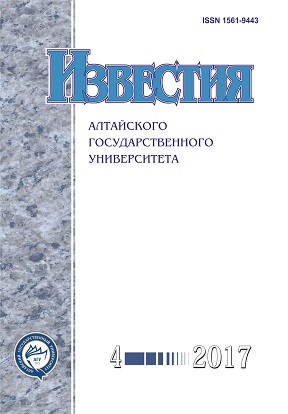Дистанционный микроволновый мониторинг засоленных почв
Аннотация
На примере степной зоны Западной Сибири проведен комплексный микроволновый мониторинг засоленных почв. Исследованы пространственно-временные характеристики микроволнового излучения почвенного покрова в условиях почвенного засоления. Исследованы зависимости микроволнового излучения засоленных почв Кулундинской степи от объемной влажности и температуры. Осуществлен анализ радиояркостных температур подстилающей поверхности, измеренных со спутника SMOS (Европейское космическое агентство). Для дистанционного определения объемной влажности почвы предложено использовать данные микроволнового зондирования со спутника и зависимости коэффициентов излучения от объемной влажности и температуры, рассчитанные по результатам лабораторных измерений диэлектрических характеристик засоленных почв. Для определения значений радиояркостных температур (ТВ) подстилающей поверхности использовались данные спутника SMOS (продукт L1с), сделанные на частоте 1.41 ГГц под углом зондирования 42.5º и откалиброванные в единицах радиояркостных температур. Данные продукта L1с привязаны к дискретной геодезической сетке DGG ISEA 4H9.
DOI 10.14258/izvasu(2017)4-09
Скачивания
Metrics
Литература
Metternicht G.I. Assessing temporal and spatial changes of salinity using fuzzy logic, remote sensing and GIS. Foundations of an expert system // Ecological Modelling. — 2001. — V. 144, № 2-3.
Guo Y., Shi Z., Zhou L., Jin X, Tian Y., Teng H. Integrating Remote Sensing and Proximal Sensors for the Detection of Soil Moisture and Salinity Variability in Coastal Areas // Journal of Integrative Agriculture. — 2013. — V. 12, № 4.
Mulder V.L., Bruin S., Schaepman M.E., Mayr T.R. The use of remote sensing in soil and terrain mapping // Geoderma. — 2011. — V. 162, № 1-2.
Gravalos I., Moshou D., Loutridis S., Gialamas T., Kateris D, Bompolas E., Tsiropoulos Z., Xyradakis P., Fountas S. 2D and 3D soil moisture imaging using a sensor-based platform moving inside a subsurface network of pipes // Journal of Hydrology. — 2013. — V. 499.
Ding J.-L., Wu M.-C., Tiyip T. Study on Soil Salinization Information in Arid Region Using Remote Sensing TechniqueOriginal Research Article // Agricultural Sciences in China. — 2011. — V. 10, № 3.
Mashimbye Z.E., Cho M.A., Nell J.P., De Clercq W.P., Van Niekerk A., Turner D.P. Model-Based Integrated Methods for Quantitative Estimation of Soil Salinity from Hyperspectral Remote Sensing Data: A Case Study of Selected South African Soils // Pedosphere. — 2012. — V. 22, № 5.
Bell D., Menges C., Ahmad W., van Zyl J.J. The Application of Dielectric Retrieval Algorithms for Mapping Soil Salinity in a Tropical Coastal Environment Using Airborne Polarimetric SAR // Remote Sensing of Environment. — 2001. — V. 75, №3.
Melendez-Pastor I., Navarro-Pedreno J., Koch M., Gomez I. Applying imaging spectroscopy techniques to map saline soils with ASTER images // Geoderma. — 2010. — V. 158, № 1-2.
Weng Y.-L., Gong P., Zhu Z.-L. A Spectral Index for Estimating Soil Salinity in the Yellow River Delta Region of China Using EO-1 Hyperion Data // Pedosphere. — 2010. — V. 20, № 3.
Gutierrez A., Castro R. SMOS L1 Processor L1c Data Processing Model / S0-DS-DME-L1PP-0009. — N 2.7.
31 May [Electronic resourse]. — URL: http://www. smos.com.pt/downloads/release/documents/SO-DS-DME-L1PP-0009-DPM-L1c.pdf
Sahr K., White D., Kimerling A.J. Geodesic Discrete Global Grid Systems // Cartography and Geographic Information Science. — 2003. V. 30, № 2.
Шарков Е.А. Радиотепловое дистанционное зондирование Земли: физические основы. — М., 2014. — Т. 1.
Copyright (c) 2017 А.Н. Романов, И.В. Хвостов

Это произведение доступно по лицензии Creative Commons «Attribution» («Атрибуция») 4.0 Всемирная.








